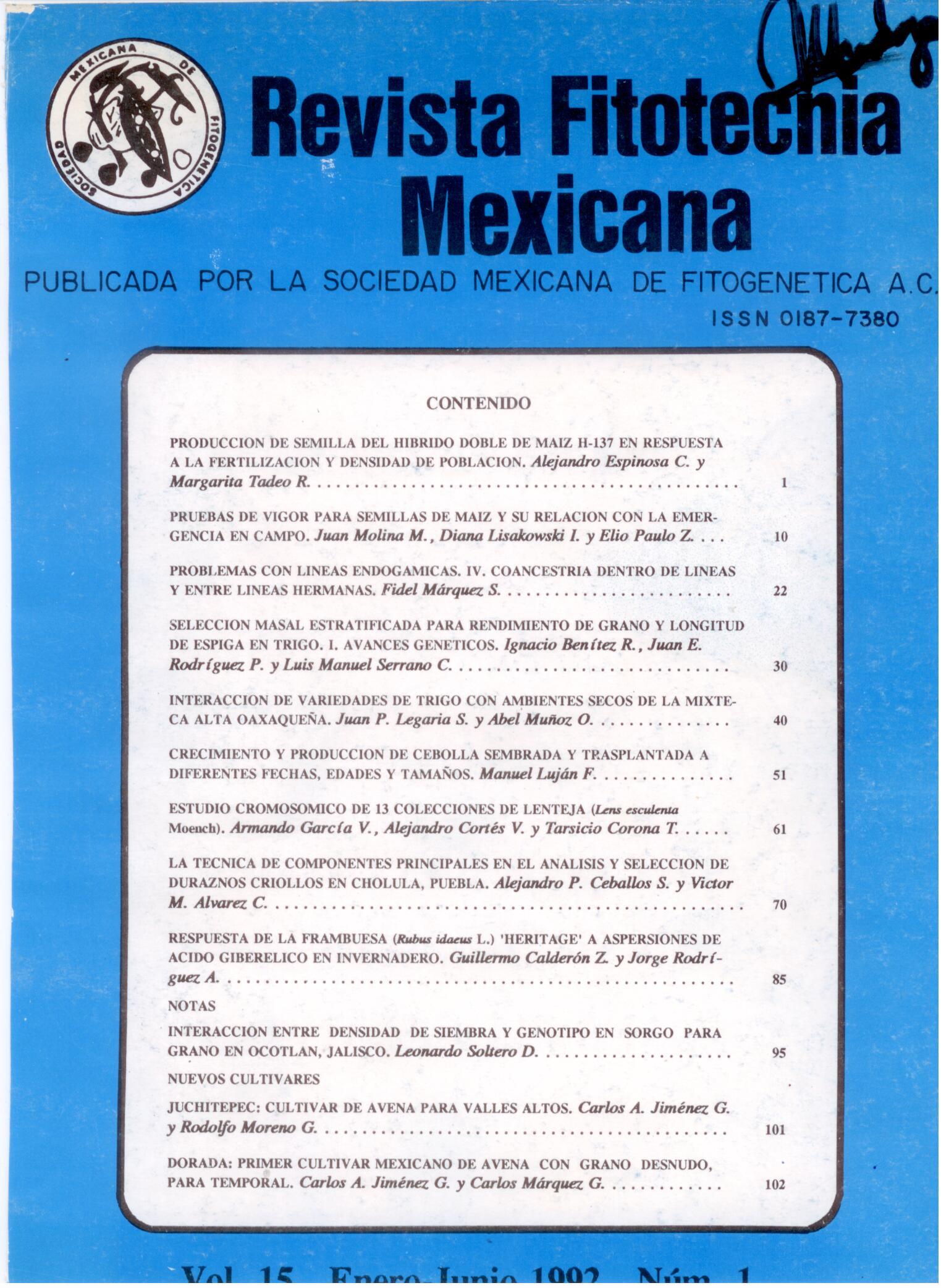DORADA: FIRST CULTIVAR MEXICAN FROM A VEIN WITH NAKED GRAIN, FOR TEMPORARY
Main Article Content
Abstract
At INIFAP, the Oat (Avena sativa L.) Genetic Improvement Program began in 1960; Since then, new materials have been selected and management of segregating populations has been done using the pedigree method. As a result, from this work the program has obtained improved varieties superior in yield, agronomic characteristics and grain quality. All of this work has been carried out on shelled oat (A. sativa) materials; However, due to the qualities and advantages of naked oats (Avena nuda), in 1976 the introduction of Russian materials of this species began, identifying outstanding materials that were crossed with shelled oats, from which the first Mexican cultivar of naked grain oats, called 'Golden', in honor of the Mennonite countryside, in the region of Cuauhtémoc, Chih., where it was commercially validated for the first time, during the summer of 1986, with Mr. Peter Froese Mantem.
Dorada is a cultivar created in the experimental fields of INIFAP between 1977 and 1982, by the pedigree method. The cross was made in Chapingo, during the summer of 1977. The following year, in summer, another cross was made in F2 plants where Nuprime, of Russian origin, was used as a source of shelled grain. In 1978, during the autumn-winter cycle, the selection process began with the sowing of F1 in Campo Bajío and even O1-81-82 was selected in F7 to be evaluated in performance trials during eight cycles in three locations. Its selection history is I- 3007-3C-26-17C-1C-1C-OR. From F8 onwards, performance and adaptation evaluations began. Among the main agronomic characteristics are: stems with a soft texture, medium-sized leaves 1.5 to 2.5 cm wide without hairs. Panicle of medium to long size (15 to 20 cm), equilateral and the main characteristic that distinguishes it is that its florets are branched and that most of the grain does not have a shell. It is an early variety that heads after 50 days and
It reaches its physiological maturity approximately 115 days after birth, under conditions of the Valley of Mexico.
Its height is 100 to 200 cm in seasonal weather, it is moderately susceptible to lodging and resistant to shattering. Under the conditions environments where it was evaluated for resistance to stem rust Puccinia graminis a. , a characteristic that makes it outstanding.
Its performance potential has been experimentally evaluated in Chapingo and Juchitepec, Edo. of Mexico, in summer, and Roque, Gto., in winter. Compared to the 'Tulancingo' cultivar as a control, Dorada was superior in 20% of shelled grain, since it yielded 2,180 kg ha-1. The quality analyzes carried out with Dorada grain, in addition to showing superiority to Tulancingo, did not show any evidence, after three months of controlled storage, that the fatty acids caused "rancidity" which is one of the apparent disadvantages in naked oats for its industrialization. The values found were 6.87% at the beginning of storage and decreased until reaching 5.1% at the end of sampling. It was registered in the National Registry of Plant Varieties in February 1991, with the code AVE-190291-008.

